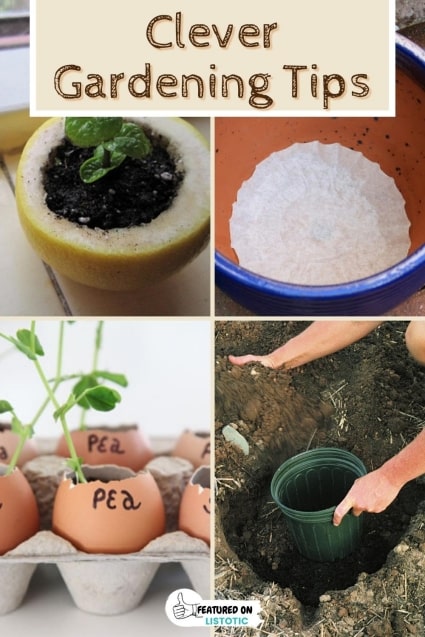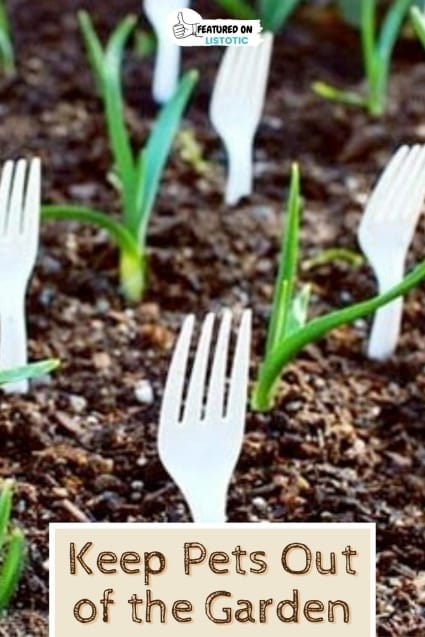As an Amazon Associate, I earn from qualifying purchases.
Are you ready to make your garden thrive like never before? Whether you have a small balcony or a sprawling backyard, the right tips can turn your gardening efforts into a rewarding experience.
In this post, you’ll discover 14 clever gardening ideas that save you time, boost plant health, and bring more beauty to your space. These simple tricks are designed to work for you, no matter your skill level. Keep reading, and watch your garden transform into the vibrant oasis you’ve always wanted.
Smart Soil Preparation
Smart soil preparation is the first step to a healthy garden. Good soil helps plants grow strong and resist pests. It holds water well and gives roots space to breathe. Preparing soil properly saves time and effort later. Follow these simple tips to get your soil ready.
Choosing The Right Soil Mix
Choose soil based on your plant’s needs. Some plants like sandy soil that drains fast. Others prefer clay soil that holds water longer. A mix of sand, silt, and clay, called loam, works for most plants. You can buy pre-mixed soil or create your own. Mix garden soil with compost for better texture and nutrients.
Composting For Nutrient Boost
Compost adds natural nutrients to the soil. It improves soil structure and moisture retention. Use kitchen scraps, leaves, and grass clippings to make compost. Avoid meat and dairy as they attract pests. Spread compost over soil before planting. It helps plants grow healthier and stronger.
Soil Testing Techniques
Soil testing shows what nutrients your soil lacks. You can buy simple test kits online or at garden stores. Take samples from different spots in your garden. Follow the kit instructions to check pH and nutrient levels. Adjust soil by adding lime or sulfur to fix pH. Add fertilizers based on nutrient deficiencies found.

Efficient Watering Methods
Watering plants correctly saves water and helps plants grow better. Efficient watering methods avoid waste and keep soil moist. Smart watering keeps roots healthy and stops diseases. These simple ideas fit any garden size.
Drip Irrigation Benefits
Drip irrigation delivers water directly to plant roots. It uses less water than sprinklers. Water drips slowly, reducing evaporation. This method lowers weed growth since water reaches only desired plants. Drip systems are easy to set up and save time. They help plants stay hydrated without flooding the soil.
Rainwater Harvesting Tips
Collect rainwater in barrels to water your garden. Rainwater is free and natural for plants. Position barrels under downspouts to catch water easily. Use a screen to keep leaves and bugs out. Store water in shaded areas to prevent algae. Rainwater is softer than tap water and better for soil.
Watering Schedule For Different Plants
Each plant needs a different amount of water. Succulents need less water than vegetables. Early morning is the best time to water plants. Watering late may cause diseases. Check soil moisture before watering again. Adjust schedule based on weather and season changes.
Space-saving Planting Ideas
Space is often limited for gardeners. Small yards or balconies can still grow plenty of plants. Smart planting ideas help use every inch wisely. These tips help you grow more in less space. Save room and enjoy a thriving garden.
Vertical Gardening Tricks
Growing plants upward saves floor space. Use walls, fences, or trellises to support vines and climbers. Plants like beans, peas, and cucumbers thrive here. Hanging pots or pocket planters work well for herbs and flowers. Vertical gardens look beautiful and keep plants healthy.
Container Gardening Solutions
Containers bring flexibility to small spaces. Use pots, buckets, or recycled containers to grow plants anywhere. Move them to catch sunlight or protect from wind. Choose compact vegetables, herbs, or flowers for containers. This method keeps soil and moisture controlled.
Companion Planting Benefits
Planting certain crops together boosts growth and saves space. Some plants protect others from pests naturally. Others improve soil nutrients or shade delicate neighbors. For example, tomatoes grow well with basil. Corn, beans, and squash form a classic trio. Companion planting makes your garden stronger and more productive.

Natural Pest Control
Natural pest control helps protect your garden without harmful chemicals. It uses safe, eco-friendly methods to keep bugs away. These techniques support healthy plants and a balanced garden environment.
Using Beneficial Insects
Beneficial insects eat harmful pests and keep their numbers low. Ladybugs, lacewings, and praying mantises are great helpers. They target aphids, mites, and other common garden pests. You can attract them by planting flowers like dill and fennel. These bugs work quietly and naturally to protect your plants.
Homemade Organic Sprays
Organic sprays are easy to make with simple ingredients. Mix garlic, neem oil, or soap with water for a safe pest spray. Spray plants gently to avoid damage. These sprays repel insects without toxic chemicals. Use them regularly to keep pests away and plants healthy.
Planting Pest-repellent Herbs
Certain herbs repel insects with their strong scents. Basil, mint, and rosemary help keep bugs at bay. Plant these herbs near vegetables and flowers for natural protection. They add beauty and fragrance while guarding your garden. This method saves money and reduces pesticide use.
Seasonal Gardening Hacks
Seasonal gardening hacks help gardeners make the most of every season. They allow plants to thrive despite weather changes. These tips can save time and increase harvests. Using simple methods, you can protect plants and grow longer.
Extending Growing Seasons
Use cold frames or row covers to keep plants warm. These traps hold heat and protect from cold winds. Raised beds warm up faster in spring for early planting. Start seeds indoors to get a head start. These tricks give plants more time to grow.
Protecting Plants From Frost
Cover plants with cloth or frost blankets at night. Avoid plastic; it can trap moisture and harm plants. Water plants before frost to keep roots warm. Bring potted plants indoors or into a sheltered spot. These steps stop frost damage and keep plants healthy.
Choosing Seasonal Crops
Select crops that suit the current season and climate. Cool-season veggies like lettuce grow well in spring and fall. Warm-season crops like tomatoes need full sun and heat. Crop rotation prevents soil problems and improves yield. Planting the right crops saves effort and boosts growth.

Creative Garden Decor
Creative garden decor makes your outdoor space unique and inviting. It reflects your personality and style. Simple ideas can turn plain gardens into charming retreats.
Using everyday items and art adds color and interest. It also saves money and reduces waste. Small changes create big impacts in garden beauty.
Repurposing Household Items
Old items can find new life in your garden. Use worn-out boots as flower pots. Empty cans can become colorful lanterns.
Wooden pallets make great vertical plant holders. Broken chairs can be garden sculptures or plant stands. These ideas add charm and help the environment.
Diy Garden Markers
Garden markers keep plants organized and add style. Use painted stones with plant names. Write on old spoons or wooden sticks.
Markers can be simple or artistic. Personalize them with bright colors or patterns. They guide you and brighten your garden paths.
Incorporating Art In Garden
Art pieces bring creativity to garden spaces. Hang wind chimes or colorful mobiles. Place sculptures or painted rocks among plants.
Art creates focal points and invites visitors to explore. Choose pieces that match your garden’s mood. It turns gardening into a fun and creative hobby.
Maximizing Harvest Yield
Maximizing harvest yield is key for every gardener. It means getting the most fruits and vegetables from your plants. Smart care and attention help plants grow strong and produce plenty. Small changes in your gardening habits make a big difference. Below are simple tips to boost your garden’s output.
Pruning Techniques For Growth
Pruning helps plants focus energy on fruits, not extra leaves. Cut dead or weak branches early. This lets sunlight reach healthy parts. Trim plants regularly to keep them shaped. Removing crowded branches improves air flow. This reduces disease and encourages new growth.
Proper Fertilizing Practices
Plants need nutrients to grow big and healthy. Use balanced fertilizer with nitrogen, phosphorus, and potassium. Apply fertilizer at the right time, not too much. Over-fertilizing can harm roots and reduce yield. Mix organic compost into soil for better nutrition. Feed plants during active growth for best results.
Harvest Timing Tips
Picking fruits and vegetables at the right time boosts yield. Harvest early in the morning for freshness. Wait until crops fully ripen but not overripe. Regularly check plants to avoid missing peak harvest. Removing ripe produce encourages plants to produce more. Timely harvesting keeps plants healthy and productive.
Frequently Asked Questions
What Are The Easiest Gardening Tips For Beginners?
Start with simple plants, use good soil, water regularly, and keep your garden clean.
How Can I Save Water While Gardening?
Use drip irrigation, water early or late, and add mulch to keep soil moist.
What Are Some Smart Ways To Use Small Garden Spaces?
Grow vertically, use containers, and plant compact or dwarf varieties.
Conclusion
Gardening can be simple and fun with the right tips. These 14 ideas help save time and grow healthy plants. Small changes make a big difference in your garden’s look and health. Try them one by one and see what works best.
Enjoy watching your garden grow and bloom. Happy gardening!

